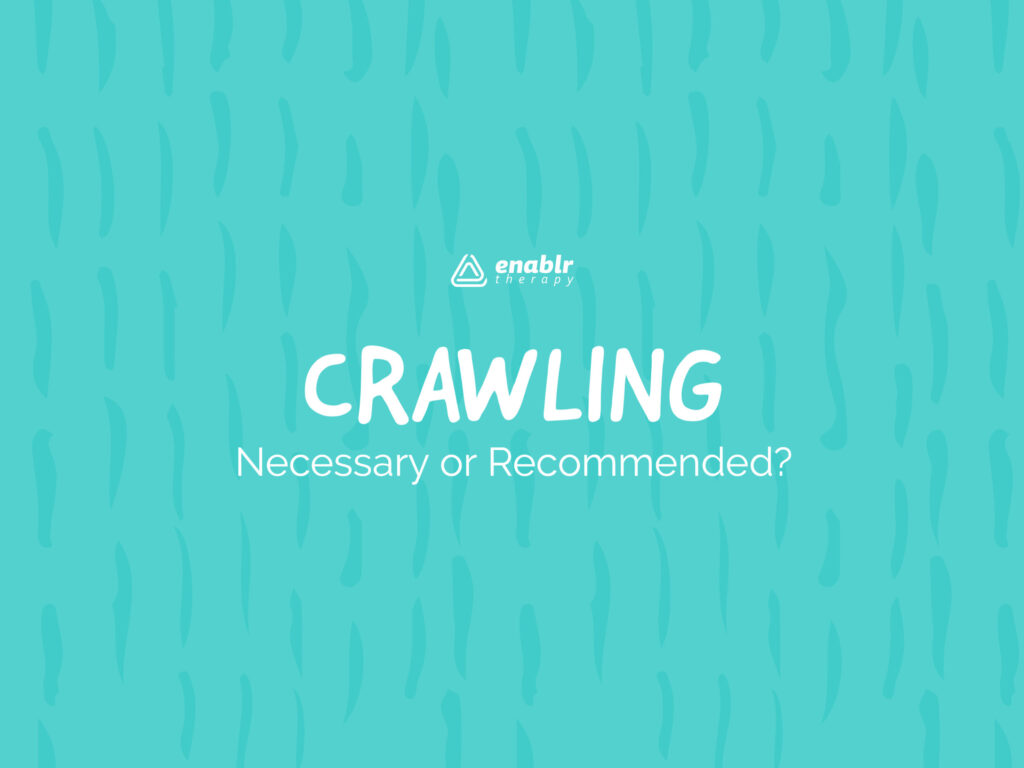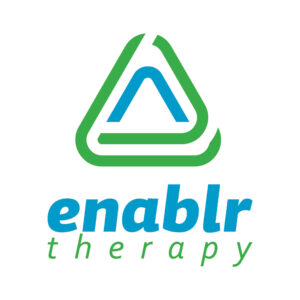
Years ago, it was suggested that babies that did not crawl on all fours were at a higher risk of developing a learning disability. However, more current research and studies prove otherwise. Although crawling has benefits, it is not mandatory and will not be the sole reason for a child developing a learning disability.
If you are concerned that your child needs assistance with movement, stability, and hand development, click here to learn more about our therapy services!

Reciprocal Movements
By learning how to move arms and legs in a pattern, this promotes the understanding of how the body is supposed to work for activities like walking. There are other ways to learn reciprocal movements other than crawling.
Joint Stability and Posture
It is stressed early on to promote tummy time with babies. This will improve their back and neck muscles, which allows them to lift their head, and eventually sit upright, unsupported. Applying pressure through the joints on all fours helps to build strength and stability. However, there are other ways to achieve this if your baby decides not to crawl.
Hand Development
Each of your fingers has a purpose. For example, to pinch and use fine motor skills for manipulating objects, your baby’s index finger and thumb must strengthen and learn the coordination skills needed to accomplish the pinching motion. In addition, the pinky side of the hand is used for stability. Weight bearing through the hands and arms on a flat surface helps to develop these skills and can increase stabilization for handwriting and other refined skills needed in later childhood. Crawling helps to promote the strengthening, spacing, and proper curvature of the hand. Again, there are other ways to promote this if your baby chooses not to crawl.
Depth Perception
As your baby crawls around, they will learn how close or how far away objects are for grabbing, pulling up on, and finding the edge of objects. As stated before, there are other ways to achieve this skill.
Scooting on their bottoms, army crawling, rolling, etc. are just a few other ways your baby will learn to navigate the environment and still develop necessary motor skills. But how can these benefits of crawling still be achieved if the baby chooses not to crawl?

Reciprocal Movements
As babies learn to get around in their own way, they will practice some reciprocal movements and begin to understand the cause and effect of their movements. For example, babies learn that if they reach out further and pull, they will move closer to the toy. The parent can also “practice walking” with their child to show what happens when one foot is placed in front of the other. For older children, riding a tricycle or kicking/throwing a ball also uses reciprocal movement.
Joint Stability and Posture
Tummy time is something that should be practiced. However, crawling does not always follow. To promote joint stability and posture, place the child on their tummy often while playing and transition them to the quadruped (on all fours) position. Here, you can practice rocking, reciprocal movements, and stability as they transition to sitting upright.
Hand Development
Playing interactive games (like peek-a-boo), exploring and manipulating toys, and self-feeding are great ways to promote hand development and fine motor skills that would be otherwise missed without crawling. While playing with toys, a 3-5 month old will reach and grasp the toy while the 6-8 month old will shift the toy from hand to hand and the 9-12 month old will poke and probe the toy with their index finger.
With self-feeding, please ensure the food choice is appropriate for the child and watch that the 6-8 month old baby rakes with their whole hand to grab the food while the 9-12 month old picks up the food with their index finger and thumb. These skills will further develop as they begin to pull themselves up and support themselves by increasing shoulder strength and stability.
Depth Perception
Once your baby finds a way to move around- whether rolling around and realizing that one more roll will lead to the toy or scooting on their bottom and realizing it takes three scoots to touch the dog’s tail, depth perception will be learned. Providing opportunities for your child to reach for or retrieve objects is a great way to develop depth perception.
In the end, your baby may choose to never crawl, and that is okay. Crawling is not seen as a mandatory developmental milestone as it used to be. There are ways to still help your child achieve the skills needed for further development.
Enablr Therapy is here to help if you feel like your child may need some assistance and are unsure what to do to help your child. Whether your baby needs help with grabbing/grasping, joint stability, posture, or movement, our highly knowledgeable therapist are ready to answer your questions.

References:
Montgomery, N. (n.d.). Is it true that babies who skip the crawling stage may have learning problems later? BabyCenter. https://www.babycenter.com/baby/baby-development/is-it-true-that-babies-who-skip-the-crawling-stage-may-have_10323704.



